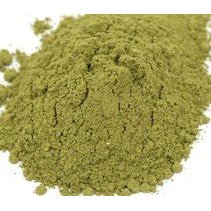My natural hair color is black but the sun lightens it to a dusty, unappealing brown…not good. In order to counteract the undesirable effects of the sun, I deposit dark colors into my hair to maintain a rich, dark shade. I used to apply commercial hair coloring products until I learned how extremely toxic they are, especially black and reddish tones. So I sought out a non-toxic way of coloring my hair and voila, plant dyes! Guys, this is for you too!
Plant Hair Dyes
Here are a list of plants that will assist you in achieving various shades. Keep in mind that the plants listed will only deposit color into your hair and not lighten it:
Henna/Lawsonia Inermis: Great for attaining red, burgundy or auburn colors. It also helps combat dandruff and lice.
Cassia Obovata: Brightens blonde hair when used alone. When mixed with a small amount of henna, you can achieve colors akin to strawberry blonde. If your shade is darker than gray or blonde, it will leave your hair glossy.
Indigo: When applied after rinsing henna out, the end result is jet-black. When added into a henna mixture, the results range from light brown to off-black depending upon your hair color.
Buxus Dioica/Katam: When mixed with henna and/or cassia, you can obtain colors ranging from ash blonde to milk chocolate. For medium brown to dark hair, a glossy color.
Amla/Emblica Officinalis: Since henna has a propensity to slightly relax natural curls; many have used amla to prevent and offset henna’s relaxing properties. As a stand-alone product, amla defines curl pattern and adds shine to your hair also.
A Few Tips :
 1. Make sure the henna you buy is body quality henna. That simply means henna that you can apply to your skin.
1. Make sure the henna you buy is body quality henna. That simply means henna that you can apply to your skin.
2. There’s no such thing as black henna, burgundy henna, blonde henna or anything of that sort. The end result depends on A) the color of your hair B) the ratio of henna to other plant dyes.
3. There’s only one classification of Henna and that’s the plant named Lawsonia Inermis. What you add to the Henna will result in a reddish, auburn, brown or black color.
4. I wouldn’t recommend adding any terps (essential oils) to your mixture because it can leave you with a headache. Trust me, I experienced a headache first hand and had to wash the henna out prematurely.
5. Beware of compound henna. Compound henna is henna and other ingredients including metallic salts and PPD (Para-phenylenediamine). Compound henna does not react well with synthetic dyes. It can cause green hair and other unfortunate chemical reactions. So remember when buying henna, the only ingredient should be Lawsonia Inermis.
I use henna and indigo mixed together..I absolutely love it! It strengthens and thickens my hair leaving it with a lustrous shine. The application is slightly messy but it’s soooo worth it!
